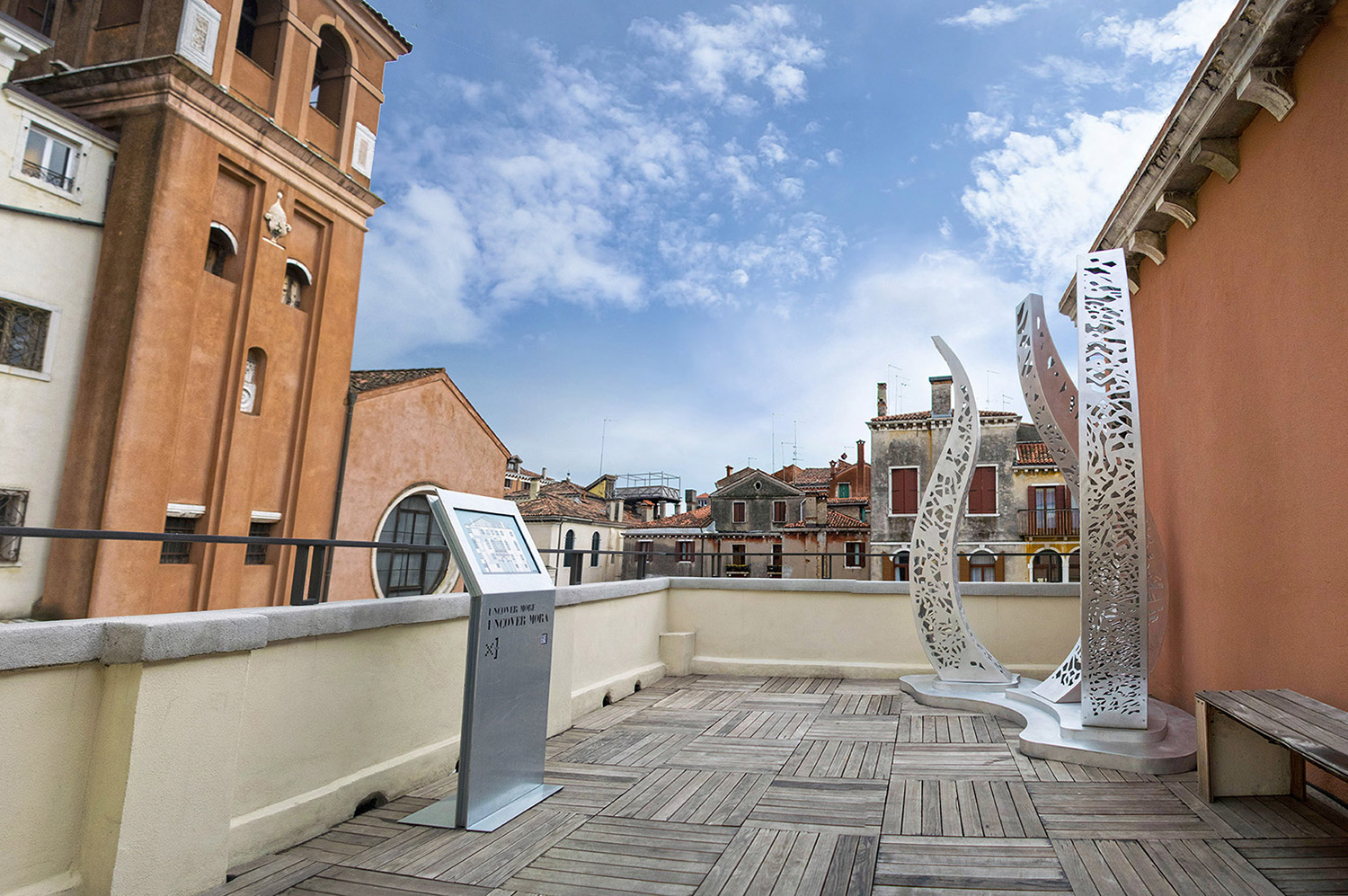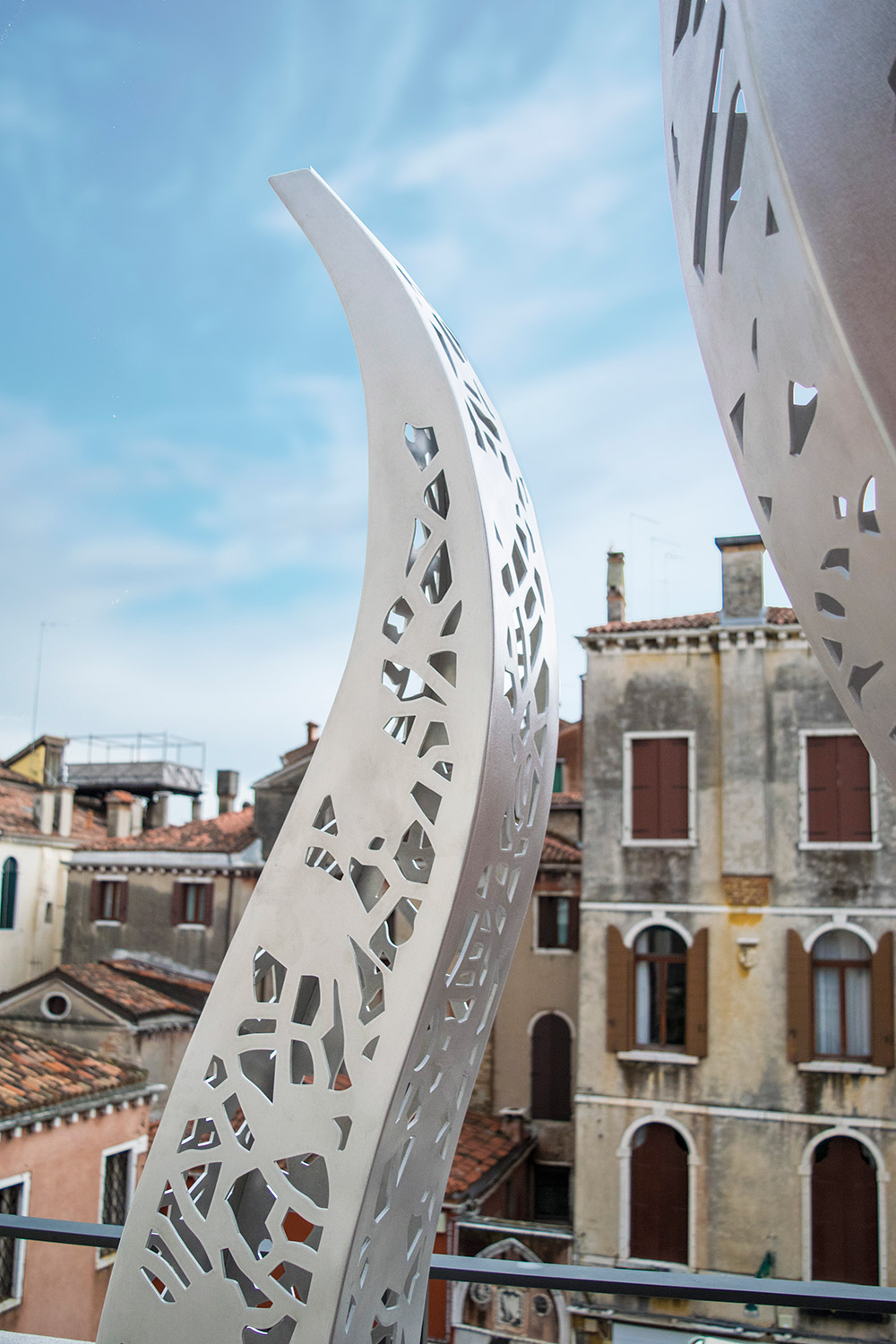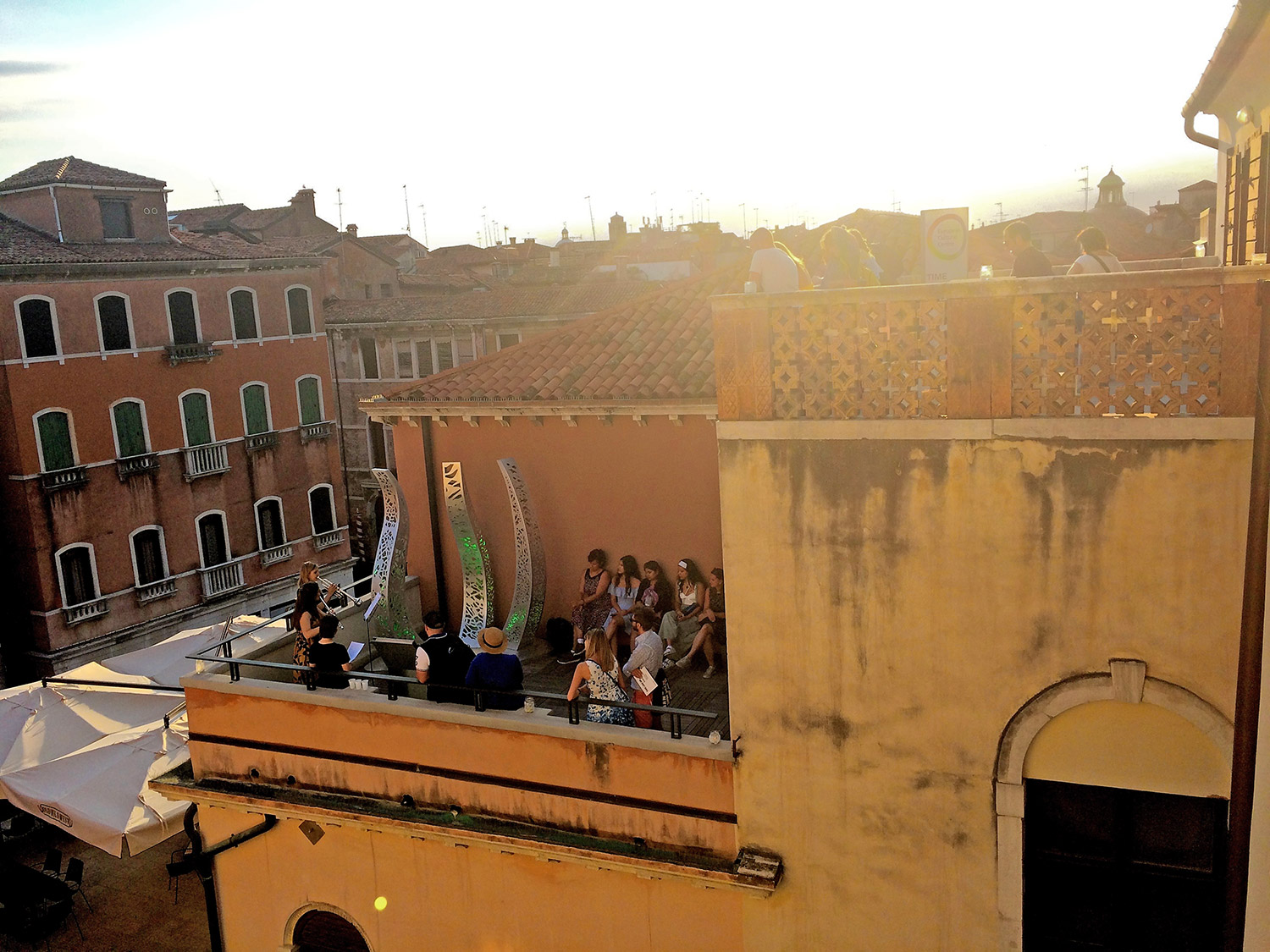SEAGRASS V
TIME SPACE EXISTENCE
EUROPEAN CULTURAL CENTRE - PALAZZO MORA, VENICE, ITALY
TIME SPACE EXISTENCE EXHIBITION
Architecture Biennial 2018
European Cultural Centre
Palazzo Mora, Venice, Italy
Strada Nova, 3659, 30121 Venezia VE, Italy
ON EXHIBIT MAY 24 - NOVEMBER 25 2018
Aluminum, integrated light
260 x 182 x 90 cm (8.5' x 6' x 3')
ABOUT SEAGRASS V
Seagrasses are found in shallow salty and brackish waters in many parts of the world, from the tropics to the Arctic Circle. Seagrasses are so-named because most species have long green, grass-like leaves. They are often confused with seaweeds, but are actually more closely related to the flowering plants that you see on land. Seagrasses have roots, stems and leaves, and produce flowers and seeds. They evolved around 100 million years ago, and today there are approximately 72 different seagrass species that belong to four major groups. Seagrasses can form dense underwater meadows, some of which are large enough to be seen from space…. Seagrasses provide shelter and food to an incredibly diverse community of animals, from tiny invertebrates to large fish, crabs, turtles, marine mammals and birds. Seagrasses provide many important services to people as well, but many seagrasses meadows have been lost because of human activities. Work is ongoing around the world to restore these important ecosystems. Pamela L. Reynolds, Ph.D., University of California, Davis
SEAGRASS is an ongoing sculptural investigation of lines derived from natural forms and deployed to create places for the built environment. SEAGRASS V, created for TIME-SPACE-EXISTENCE, is a meditation on the beauty of structures in nature: how simple, elegant lines in the natural world can shape our built environments. When considering the exhibition theme, the grandeur, and the urgent plight, of the seagrass pastures comes immediately to mind, for their health and continued existence will affect the survival of many species. Restoration efforts have been essential, but it is delicacy and toughness, inherent qualities of the seagrass structure itself, that have enabled this plant to survive as one of the oldest living organisms on the planet. These opposing qualities—fragility and strength—provide a push and pull that inspires this artwork. I am drawn to the majesty of the form, to the rhythmic motion created as the tide’s ebb and flow through the grasses, to their vulnerable and persistent forms.
"I create places of reflection, where the beauty of the natural world can be celebrated in the built environment. The sculptural places I create are site specific, responding to unique qualities of place and to the site function for which they are conceptualized. Light, both natural and artificial, is integral to all my sculptural environments: variations, glow, shadow patterns, a shimmering as light falls on water. Lighting is particularly important for SEAGRASS V. Seagrass pastures exist in light filtered through water. Light under water has its own magical quality.
I choose aluminum for its ability to express fragility and strength. The material reflects light across a shimmering silver finish. The pierced surface emphasizes the three-dimensionality of the form. Penetration of the skin creates a vulnerability. The viewer can see into the form as well as around the form and a fourth dimension is added. Vulnerability and strength, created sculpturally, evokes the vulnerability and strength of the seagrass meadows."
Fabrication: CAID Industries
Renders: Montrose Edmonds, Galatea Digital
Photo Credit: Katie McCann
















